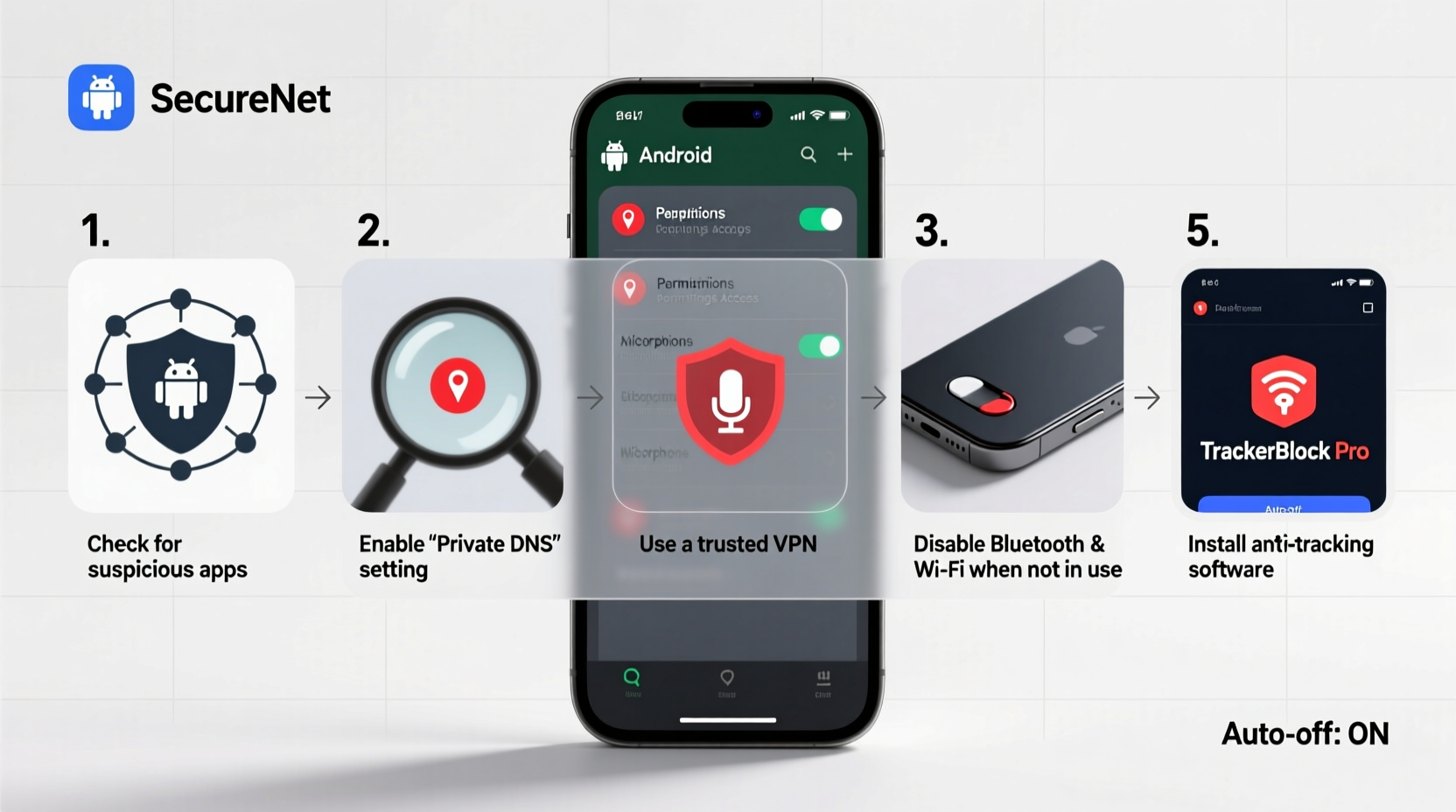In an era where smartphones are central to our daily lives, they also become prime targets for digital surveillance. Whether it’s advertisers, malicious actors, or even someone close to you, unauthorized tracking can compromise your location, messages, calls, and personal data. The good news is that most tracking can be detected—and stopped—with the right knowledge and tools. This guide walks you through practical steps to identify signs of phone tracking and implement robust protection measures.
Recognizing the Signs Your Phone Is Being Tracked

Before applying protective measures, you must first determine if your device is under surveillance. While some tracking tools operate silently, certain behavioral red flags often indicate compromise.
- Unusual battery drain: Spyware runs in the background, consuming power even when the phone is idle.
- Overheating without cause: Excessive processing from hidden apps can make your phone hot.
- Suspicious background noise during calls: Echoes or static may suggest call interception.
- Unexpected data usage spikes: Tracking apps constantly upload data to remote servers.
- Strange texts or app behavior: Receiving odd SMS with random characters could signal remote command signals.
- Apps opening or closing on their own: Indicates possible remote access.
Step-by-Step Guide to Detect Tracking Software
Detection is the first line of defense. Follow these steps methodically to uncover potential threats.
- Check for unknown apps: Go to Settings > Apps and review every installed application. Look for names you don’t recognize or duplicates of system apps.
- Inspect accessibility services: On Android, navigate to Settings > Accessibility. Malware often requests these permissions to log keystrokes.
- Review location services: In both iOS and Android, check which apps have access to your location. Disable access for non-essential apps.
- Analyze network traffic: Use tools like NetGuard (Android) or GlassWire (cross-platform) to see which apps are connecting to the internet.
- Look for jailbreak or root indicators: iPhones should not be jailbroken; Android devices shouldn’t be rooted unless you did it intentionally. These states weaken security and enable deep tracking.
- Run a professional scan: Install trusted anti-malware tools such as Malwarebytes or Bitdefender to perform a full system scan.
“Many tracking apps disguise themselves as system processes. Always verify app publishers and avoid sideloading apps from unknown sources.” — Dr. Lena Torres, Cybersecurity Researcher at MITRE
Essential Protection Measures to Prevent Future Tracking
Once you’ve ruled out active tracking—or removed any found malware—it’s critical to lock down your device against future intrusions.
Update Your Operating System Regularly
Software updates patch known vulnerabilities. Enable automatic updates on both iOS and Android to ensure you’re protected against the latest exploits.
Limit App Permissions
Most apps request more access than they need. Review permissions regularly:
| Permission | Risk if Misused | Recommended Action |
|---|---|---|
| Location | Real-time tracking, habit profiling | Allow only for maps, weather, or delivery apps |
| Microphone | Eavesdropping on conversations | Disable for social media, games, and browsers |
| Camera | Unauthorized photo/video capture | Grant only to camera or video-call apps |
| Contacts | Data harvesting for phishing or spam | Only allow for messaging or dialer apps |
Use Encrypted Messaging Apps
Standard SMS and unencrypted chat apps are easily intercepted. Switch to end-to-end encrypted platforms like Signal or WhatsApp (with encryption enabled).
Enable Two-Factor Authentication (2FA)
This adds a second layer of identity verification, making it harder for attackers to gain access even if they steal your password.
Real-World Example: Recovering from Stalkerware
Jessica, a 32-year-old teacher, noticed her phone was draining rapidly despite minimal use. She also found her partner seemed to know her whereabouts before she told him. After checking her settings, she discovered an app named “System Helper” with no publisher listed. It had full location and microphone access. She uninstalled it, reset her phone to factory settings, and changed all passwords. She then enabled 2FA and began using Signal for sensitive conversations. Within days, the unusual behavior stopped, and her battery life returned to normal.
This case illustrates how stalkerware—often installed by someone with physical access—is common yet preventable with vigilance and proper security hygiene.
Comprehensive Security Checklist
Use this checklist monthly to maintain your phone’s integrity and privacy:
- ✅ Update OS and all apps
- ✅ Review app permissions (location, mic, camera)
- ✅ Delete unused or suspicious apps
- ✅ Scan with antivirus software
- ✅ Check for unexpected login attempts in Google/iCloud accounts
- ✅ Disable Bluetooth and Wi-Fi when not in use
- ✅ Verify backups are encrypted
- ✅ Lock your phone with a strong PIN, password, or biometric
Frequently Asked Questions
Can someone track my phone without me knowing?
Yes. Sophisticated spyware like Pegasus or commercial stalkerware can operate covertly. However, they often leave traces such as high battery usage, overheating, or strange network activity. Physical access to your phone is usually required for installation.
Does a factory reset remove tracking software?
In most cases, yes. A factory reset erases all user-installed apps and data. However, if the device has been compromised at the firmware level (rare but possible), even a reset may not suffice. For maximum safety, restore from a clean backup after the reset.
Is airplane mode effective against tracking?
Airplane mode disables cellular, Wi-Fi, and Bluetooth radios, preventing real-time tracking. It’s useful in high-risk situations, though it also cuts off communication. For temporary privacy, turning on airplane mode stops location transmission instantly.
Take Control of Your Digital Privacy Today
Your smartphone holds intimate details of your life—your conversations, routines, relationships, and finances. Allowing it to be tracked undermines not just privacy, but autonomy. By learning to detect suspicious behavior, removing unauthorized software, and hardening your device with smart settings and habits, you reclaim control. Security isn’t about paranoia; it’s about preparedness. Start with one step today—review your app permissions, run a scan, or update your phone. Small actions build strong defenses.









 浙公网安备
33010002000092号
浙公网安备
33010002000092号 浙B2-20120091-4
浙B2-20120091-4
Comments
No comments yet. Why don't you start the discussion?